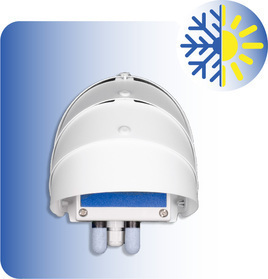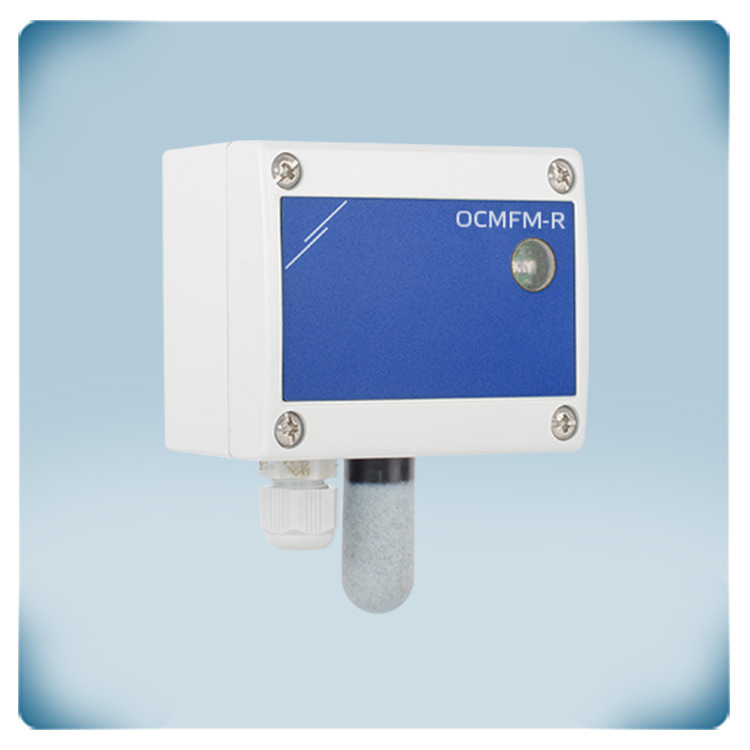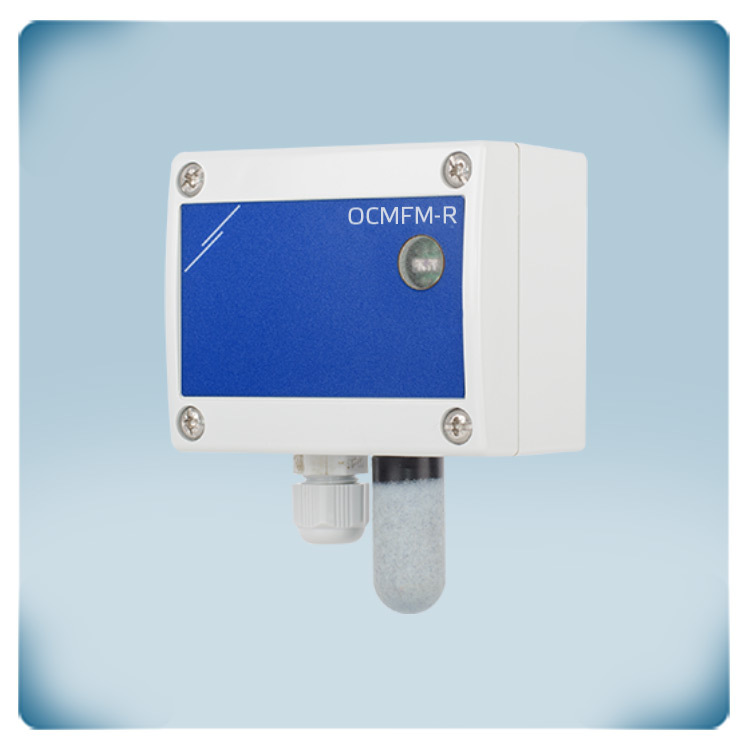EU declaration conformity
CO2 controller | IP65 enclosure | PoM
Product description
CO2 controller for HVAC systems. The power supply voltage is 24 V DC PoM, which means that Modbus RTU communication and a 24 V DC power supply can be connected using a single RJ45 connector.
Temperature, relative humidity, CO2 (carbon dioxide), and ambient light are all measured. The sensor can be used in harsh environments and in outdoor applications. The ambient light sensor can be used in many applications to control the ventilation system based on the occupancy of the room. The CO2 sensor element can be replaced if necessary.
Modbus RTU communication allows the sensor algorithm to control an EC fan, an AC fan speed controller, or a damper actuator directly. It provides access to all measurements and the output value and can be used to change all of the settings.
Documents
Additional specifications and description
Measuring CO2 in harsh environments or outdoors is essential for a wide range of applications related to industry, safety, environmental protection, climate research, and public health. The choice of measurement methods and equipment may vary depending on the specific needs and conditions of the application. People and animals produce CO2 or carbon dioxide while breathing. That makes CO2 concentration a good indicator for the occupancy and activity level in a space. In many applications, CO2 sensors are used as an indicator for the ventilation requirements. This HVAC transmitter measures temperature, relative humidity, CO2 and ambient light level. Based on the temperature and humidity measurement, the dew point is calculated. All these values are available via Modbus RTU. The sensor algorithm can directly control an EC fan, an AC fan speed controller or a damper actuator via Modbus RTU communication. The output value varies proportionally in function of the measured temperature, relative humidity and CO2 level. E.g. as temperature, relative humidity or CO2 level approaches their maximum limit, fan speed will increase or the damper will open.
NDIR or Non-dispersive Infrared technology is used to measure the CO2 level. This technology offers a low life-cycle cost and a precise and stable long-term operation.
No analogue outputs - only Modbus RTU communication
This sensor does not have analogue outputs which makes it simpler and more cost efficient. All measured values are available via the Modbus input registers. Reading the measured values is possible via SenteraWeb - our online HVAC platform, via 3SModbus software, via a BMS system or via another Modbus master device. Modbus has numerous advantages. The most important ones are that digital signals are less susceptible to interference than analogue signals and that longer cables can be used. Cable lengths of up to 1.000 meters are possible.
Easy to use
This sensor requires very little configuration. Once installed, it is almost directly ready to use. Temperature and relative humidity are frequently region- and season-specific. These parameters are still set to the correct values during installation. The other default settings are likely to be adequate for most applications. They can, however, be adjusted using the respective Modbus registers if necessary. The Modbus register map provides a complete overview of all adjustable settings. The temperature range, the relative humidity range or the CO2 range, for instance, can be adjusted via Modbus RTU.
 Self-calibrating to compensate sensor drift
Self-calibrating to compensate sensor driftThe ABC logic self-calibrating algorithm is by default enabled. This algorithm is designed to be used in applications where CO2 concentrations will drop to outside ambient conditions (400 ppm) at least once (15 minutes) in a 7day period, which is typically seen during unoccupied periods. The sensor will reach its operational accuracy after 25 hours of continuous operation at a condition that it was exposed to ambient reference levels of air at 400 ppm ± 10 ppm CO2.







.webp)
.webp)
.webp)
.webp)
.webp)
.webp)




Remarks, reviews & ratings